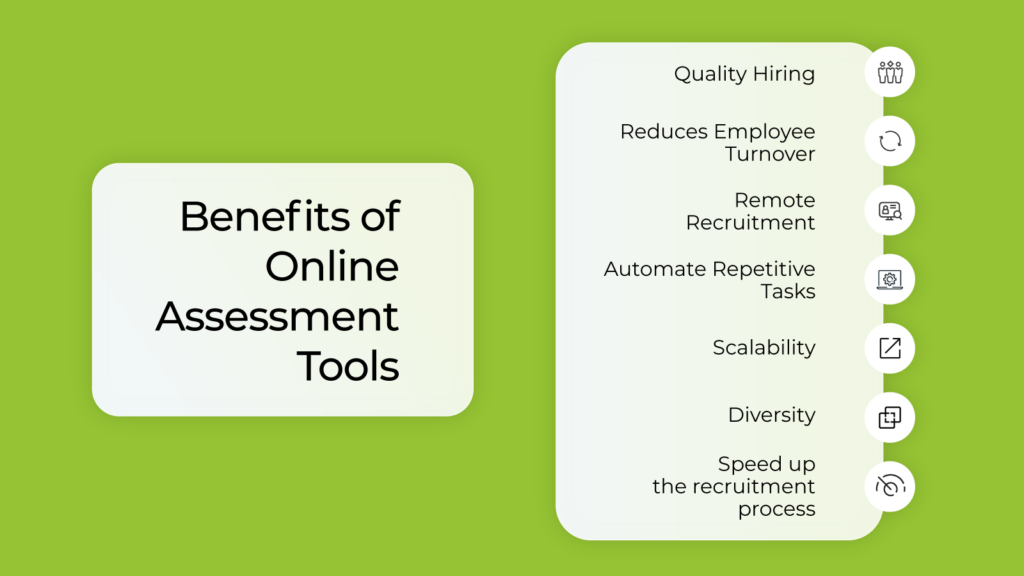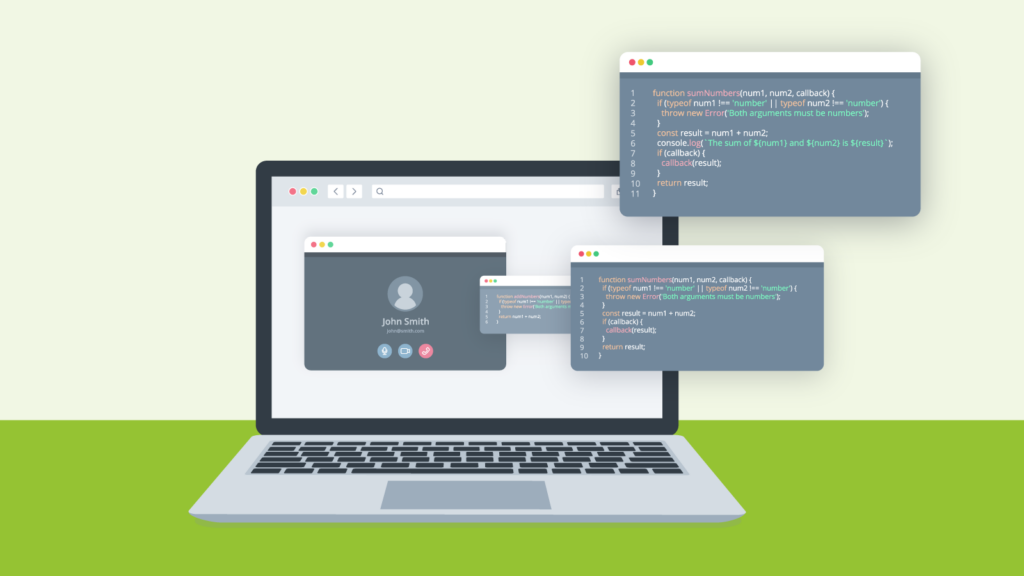The evolution of technical assessment tools: Best picks for modern evaluations

It’s become paramount to accurately measure the competencies and insights of industry professionals.
This naturally leads us to ponder: How have the methodologies we employ for evaluations transformed as we’ve journeyed through the digital age?
With a myriad of assessment tools at our fingertips, which ones truly excel in the context of today’s evaluations? Let’s embark on a journey to unravel these questions and shed light on the intricacies of modern assessment.
A brief history of technical assessment
The dawn of technical evaluations
Do you recall the era when technical evaluations were carried out using nothing more than a pen and paper?
These evaluations went beyond merely responding to questions; they required individuals to showcase their hands-on abilities right on the spot.
Such methods, while nostalgic, were labor-intensive, susceptible to mistakes due to human oversight, and often lacked a consistent approach.

Transition to digital platforms
As the world welcomed the dawn of the computer age and the widespread use of the internet, a monumental shift began in the realm of technical assessments.
No longer confined to traditional methods, the process started its transformative journey into the digital realm. The emergence of online platforms brought with it a slew of advantages: they facilitated a standardized approach to testing, ensuring that evaluations were consistent no matter where they were conducted.
Additionally, the turnaround time for results was dramatically reduced, providing instant feedback to both assessors and candidates. The reach of these digital tools was unprecedented, allowing individuals from all corners of the globe to participate in these assessments without geographical constraints.
Yet, it’s essential to note that these early digital assessment tools, while revolutionary for their time, were quite rudimentary. They lacked the advanced features, adaptability, and intricate analytics that characterize today’s state-of-the-art platforms.
The modern landscape of technical assessments
The rise of automation
The influence of automation in the sphere of technical assessments cannot be overstated. The advent of automated platforms has reshaped the landscape of evaluations.
These modern systems are equipped to provide instantaneous assessments, ensuring that feedback is relayed to participants without delay.
More impressively, many of these platforms possess the capability to mimic real-world technical situations, offering candidates challenges that mirror actual on-the-job tasks.

This immersive approach not only streamlines the assessment process, cutting down on the time traditionally required for evaluations, but also fosters a level playing field.
By automating many aspects of the evaluation, biases are minimized, guaranteeing that every participant is judged based on merit and skill alone, rather than subjective factors.
Benefits of modern technical tools
Contemporary assessment platforms have truly revolutionized the way we gauge abilities and skills. These cutting-edge tools come laden with an array of advantages.
First and foremost, they are highly scalable, meaning they can effortlessly accommodate varying numbers of users, from a handful to several thousands, without compromising on performance. Efficiency is another hallmark of these modern systems, ensuring that evaluations are conducted smoothly and results are processed swiftly.
But perhaps one of their most standout features is the ability to delve deep into analytics, offering insights that go beyond mere scores, shedding light on patterns, strengths, and areas needing improvement.
Additionally, in our interconnected world, these tools transcend regional and national borders. They are designed to be accessible to a global populace, thus providing organizations with the unparalleled opportunity to source and engage with a diverse and extensive talent pool, regardless of where these individuals might be located on the globe.
Challenges faced today
Yet, as with many innovations, it’s not a smooth ride throughout. The very technological advancements that propel these modern assessment tools forward also introduce a set of challenges.
One primary concern is the authenticity of online tests. With the vast digital landscape, there’s a pressing need to ensure that the tests being taken are genuine and not compromised in any way.
Additionally, the specter of cheating looms large. In a virtual environment, the traditional methods of monitoring become ineffective, necessitating new measures to prevent dishonest practices.
Furthermore, upholding the integrity of the entire assessment process, from question formulation to result dissemination, is paramount. These issues underscore the complexities and obstacles that contemporary evaluation tools, despite their many benefits, must grapple with.
Top picks for modern technical assessments
Automated assessment platforms
Within the domain of automated technical evaluations, platforms like Devskiller and HackerRank stand out as industry leaders. These platforms differentiate themselves through their unique and pragmatic testing methods. Instead of just traditional quizzes, they present candidates with real-time coding challenges.
This practical approach ensures that evaluations focus on hands-on capabilities, emphasizing the importance of real-world problem-solving over mere theoretical understanding.
Such a methodology ensures that individuals who perform well on these platforms possess genuine technical acumen, ready to tackle challenges they might encounter in professional environments.

Real-time collaboration tools
Platforms such as GitHub and Bitbucket have risen to prominence. These tools are designed not just for code storage but to facilitate real-time collaboration among developers.
This collaborative environment provides assessors with a unique window to gauge not only a candidate’s coding prowess but also their ability to work cohesively within a team.
By observing interactions, contributions, and communication in real-time, evaluators can get a comprehensive understanding of a candidate’s teamwork dynamics and collaborative aptitude.
AI-driven evaluation platforms
As we gaze into the horizon of technological advancements, it’s clear that artificial intelligence (AI) is poised to take center stage. Platforms that adeptly leverage the capabilities of AI are revolutionizing the assessment landscape.
These advanced systems delve deeper than traditional evaluation methods. By analyzing a candidate’s interactions and responses, they can offer profound insights into their problem-solving prowess, logical reasoning, and analytical thought processes.
More impressively, with the predictive power of AI, these platforms can even forecast a candidate’s potential future contributions and performance trajectory.
Future prospects in technical assessments
The role of AI and ML
The rise of artificial intelligence (AI) and machine learning (ML) has heralded a new era in the world of technology, and their implications are vast and profound.
Among the many areas of impact, the domain of technical assessments stands to witness groundbreaking evolutions.
Imagine a world where AI-powered evaluation platforms are not just a futuristic concept but a reality. These platforms, driven by intricate machine learning algorithms, possess the ability to dynamically adapt their questions in real-time.
But how does this work? As a candidate progresses through the assessment, the platform continuously analyzes their responses. If a candidate breezes through a set of questions, the platform might increase the complexity or shift to a different area of expertise, ensuring the individual is always challenged at an appropriate level.
Conversely, if a candidate struggles or consistently answers incorrectly, the system can recalibrate, offering questions that might better gauge their particular skill set or providing an opportunity to showcase strengths in other areas.
This level of adaptability means that no two assessments are exactly alike; each is tailored to the individual’s knowledge, skills, and abilities.
Such advancements not only provide a more accurate representation of a candidate’s capabilities but also enhance the overall assessment experience.
Candidates no longer face a one-size-fits-all test but engage in an interactive, dynamic process where the assessment evolves in tandem with their responses.
Furthermore, the integration of AI and ML into assessment platforms has the potential to revolutionize the backend analytics.
Recruiters and organizations can receive detailed insights into a candidate’s thought processes, decision-making abilities, and areas of proficiency, all in real-time.
This wealth of data can then be utilized to make informed decisions, optimize training programs, and ensure that the right talent is placed in the right roles.
In essence, the fusion of AI and ML in technical assessments is not merely about refining the evaluation process. It’s about ushering in a paradigm shift, one where assessments are not just tools of measurement but dynamic instruments that adapt, learn, and provide unparalleled insights into human potential.

Integrating AR and VR
Augmented Reality (AR) and Virtual Reality (VR) are often synonymous with the world of gaming and entertainment, captivating audiences with immersive experiences and alternate realities. However, to pigeonhole these technologies into merely these sectors would be a grave underestimation of their vast potential.
Beyond the realms of entertainment, AR and VR are making significant inroads into the domain of assessments and professional evaluations.
By harnessing their capabilities, evaluators can create intricate simulation environments that mirror real-world scenarios.
These aren’t just rudimentary simulations; they’re rich, detailed, and multi-faceted experiences that transport candidates into virtual situations that challenge them in ways traditional assessments cannot.
Imagine a medical student being assessed on their surgical skills, not on a lifeless mannequin, but within a VR-operated theater, complete with virtual patients, tools, and potential complications. Or consider an engineer, tested on their problem-solving skills in an AR-replicated factory floor with real-time machinery malfunctions.
These scenarios, powered by AR and VR, offer unparalleled realism, pushing candidates to apply their knowledge, think on their feet, and showcase their expertise in lifelike conditions.

The incorporation of these technologies into assessments doesn’t just elevate the quality of evaluations; it revolutionizes the entire process.
Traditional pen-and-paper tests or even computer-based evaluations can only go so far in gauging a candidate’s true potential. With AR and VR, evaluators have a toolkit that probes deeper, assessing not just knowledge but also practical application, decision-making, and real-world problem-solving capabilities.
Furthermore, the novelty of such an approach ensures that candidates are engaged and invested in the process. No longer is an assessment a mundane task, but an exciting, immersive journey that challenges and stimulates in equal measure.
In conclusion, while AR and VR’s contributions to entertainment are undeniable, their transformative impact on the landscape of assessments is where they truly shine, heralding a new age of comprehensive, immersive, and realistic evaluations.
Conclusion
The progression and refinement of technical assessment tools serve as a mirror to the overarching transformations within our ever-evolving technological world. We’ve journeyed from the rudimentary days of hand-written evaluations to the present, where intricate platforms powered by artificial intelligence lead the charge.
With every leap and bound in technological advancements, it’s evident that the future holds even more groundbreaking innovations. These forthcoming developments promise to further revolutionize the methodologies and approaches we employ to gauge an individual’s technical expertise.
FAQs
- What were the drawbacks of manual technical assessments?
They were time-consuming, lacked standardization, and were prone to human error. - How has automation benefitted technical assessments?
Automated platforms provide real-time evaluations, instant feedback, and unbiased evaluations. - What challenges are faced by modern assessment tools?
Ensuring authenticity, preventing cheating, and maintaining the integrity of online tests are some challenges. - How can AI and ML impact future technical assessments?
They can offer personalized assessments, adapt questions based on responses, and predict candidate performance. - How can AR and VR be integrated into technical assessments?
They can simulate real-world scenarios, providing immersive assessment experiences.
Share post